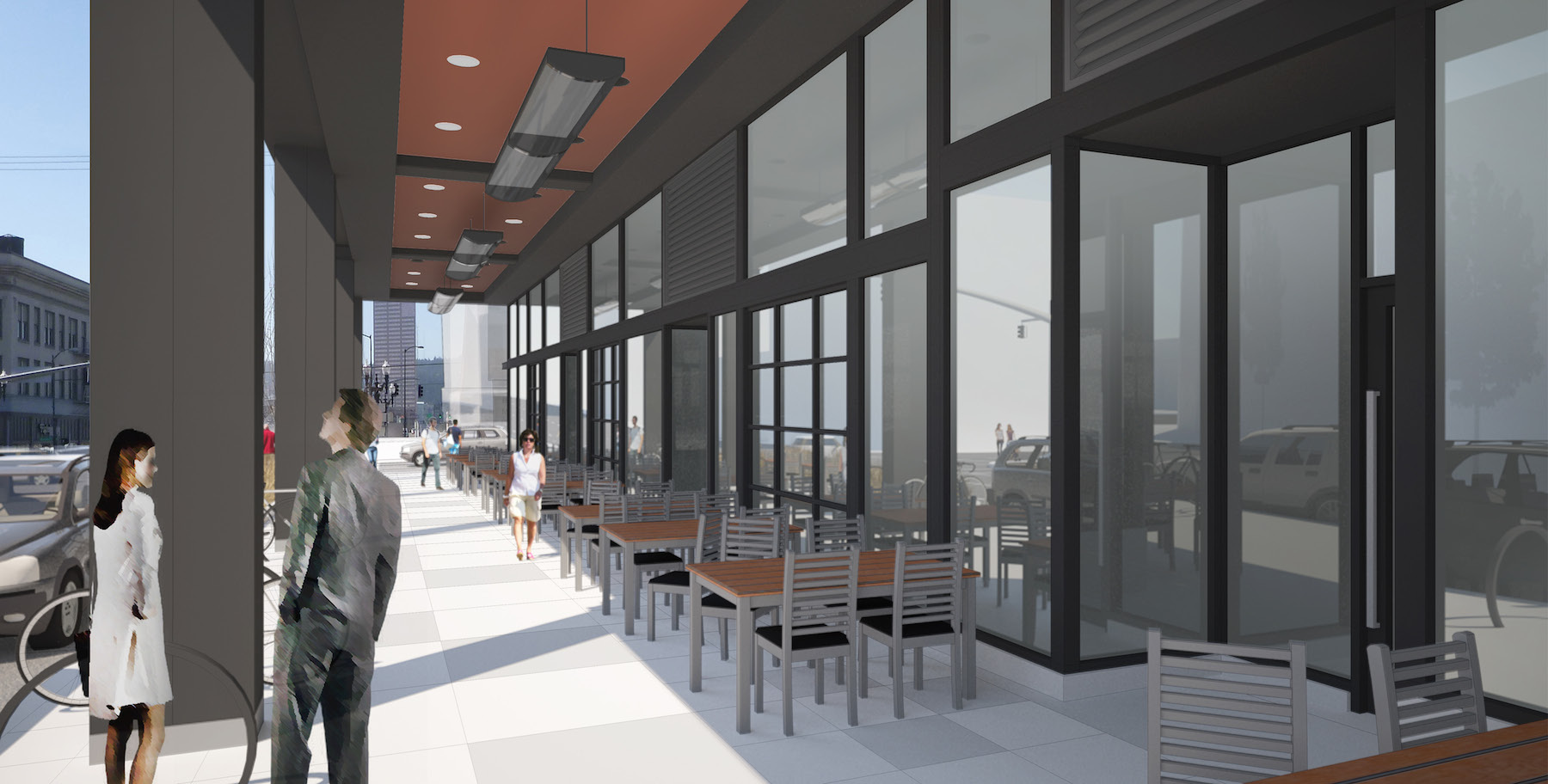
419 E Burnside
The Portland Design Commission on Wednesday presented its annual State of the City Design Report to the City Council. Presenting the report was Chair David Wark, joined by Vice Chair Ben Kaiser.
The presentation began by explaining the role and function of the Design Commission. The Commission was created in the early 1980s in response to a number of auto oriented buildings that presented very hostile frontages to the street. Portland’s Design Review system heavily focuses on the first 30′ of the building, and buildings built since that period have generally presented much more pedestrian friendly facades.
As examples of what the Commission does, three projects that improved during the Design Advice / Design Review process were offered. 419 E Burnside is a building that is about to begin construction in Lower E Burnside, an area defined by the ground floor arcades on a number of historic buildings. As initially presented, the design had little reference to its unique location, and the Commission suggested to the applicant that they study the context further. The building that was ultimately approved incorporates a south facing arcade with active uses that can spill out onto the sidewalk. Other buildings that the Commission felt improved substantially were the new Stadium Fred Meyer and the Pearl District Marriott Residence Inn.
One of the duties of the Commission laid out in City code is to provide advice on design matters, and four specific recommendations were presented to the Council:
- Expand the ‘d’ overlay zone. Most of the new buildings in Portland do not go through Design Review, and only need to meet the minimum requirements of the Zoning Code. The Design Commission itself only reviews projects in the Central City and Gateway. Some other areas have a Design overlay, but the Design Commission only sees the project if the initial decision by the Bureau of Development Services is appealed. As a volunteer body that is already extremely busy there are challenges in expanding the scope of Design Review, but the Commission feels that these could be worked out. One option might be multiple Design Commissions for different geographic areas of the city. Another would be to expand the pool of Commissioners.
- Reconsider the housing bonus. In many locations Zoning Code currently gives developers an automatic increase in allowable height and floor area ratio (FAR) if the project includes housing. If the City is going to continue to offer a bonus for housing, the Commission suggests that it might be more targeted, such as specifically for affordable housing.
- Update the Community Design Standards. The Community Design Standards are an alternative path that allows applicants to avoid Design Review in certain areas. The Commission feels that these are now woefully out of date, a view that is widely shared.
- Reconsider housing as a ground floor active use. In commercial corridors the Zoning Code requires the ground floor of buildings to have ‘active uses’ such as retail, which create a connection between the ground floor use and the sidewalk. Residential is currently an allowable ‘active use’, which the Design Commission feels has a deadening effect on commercial corridors. Although some commercial corridors may not yet have the market demand for continuous retail, the Commission has generally welcomed projects that have live/work units on the ground floor, which can potentially be converted to retail in the future.
The full audio of the presentation is available below, and the slides are available here [PDF].
